Education
![]()
What and Why | Let's Tackle Scientific Problems | Junior High School Science | Only One Earth | Science Club | Whiz Bang Science | Maths Wonderland | Digital Pictorial Book - Nature in Japan - | Experiments Are Fun | Pythagora Switch | Pythagora Switch II | Pythagora Switch III | Pythagora Switch IV | Let's Get Movin' | Science Sleuth | ABU Voyage to the Future | The Science Station | We Love Science | Joule & Professor Watt | Wonderful Science | KIDS SURVIVAL SCHOOL | What Can We Do? Our Planet’s Future | Listen to the Earth | The Power to Save Lives in Disasters | Let's enjoy Math with Barky the Dog | LIFE IS A CHALLENGE | Bravo to Music! | TAKE TECH | Viewpoint Science | Story Land | Endless Wonders | TEXICO |
 Science Club | Science Club
Science Club | Science Club
ED069500![]()
サイエンスクラブ [EX]
![]()
![]()
![]()

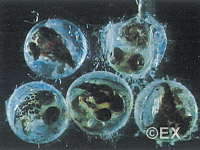
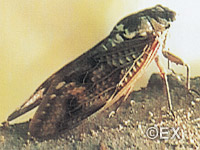
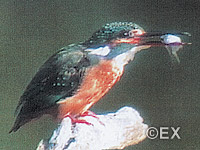
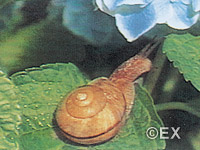
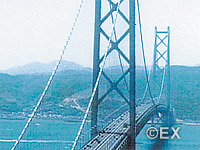
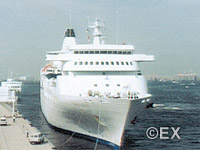
|Length : 15min. x15 |Year : 1995 |
"Science Club" is a series of programs offering scientific insights into a wide rangeof natural phenomena ranging from everyday events to biology, physics and even technology.
[1. The Mysterious World of Ants]
How do ants use scent-pheromones to navigate their ways between food sources and their nests? Observe different species of ants, and the behavior of ants of different social classes.
[2. The Life and Secret of the Honeybee]
Nature's busiest insects have their sophisticated social hierarchy and systems of communication. How bees communicate with each other ,and what determines a queen bee are illustrated.
[3. How Are Seeds Made?]
Plants reproduce endlessly in different ways. Some need the help of insects to pollinate while others are able to perform what is called self-pollination.
[4. The Mystery of the Egg]
Not all eggs round and white! The bitter ling lays eggs inside a mussel for safe keeping. the egg of the horn shark is like a cork-screw.
[5. How are Nests Built?]
Home-building practices of creatures diverse as various as spiders and crows.hoe do spiders know when something has caught in their web? Why cannot ants escape from traps doodlebugs?
[6. The Way Living Organisms Communicate]
How do creatures communicate with each other? "The Secret behind behavior of those creatures is revealed,such as citing the color butterflies and the sing of cicadas.
[7. The Select of Flying Animals]
The birld's flight mechanism is explained, through the V Formation of birds of passage and a flight training of a goshawk family.
[8. The Strategy of Plants for Breeding]
How do plants breed? The oriental orchid ejects a pheromone to attract honey bees. The strategy of plants is shown on both entomophilous flowers and wind-pollinating flowers.
[9. The Art of Self-Defense of Creatures that Live in Water]
Watch the way of self-protection and mechanism of creatures in the sea, citing the protective coloring of octopus or the sea slug that ejects its internal organ to their enemies.
[10. Creatures Well-Adapted to the Environment]
How do creatures adapt to a severe environment? Watch the mechanism of carnivorous plants, the moisture of cacti, the copulation of snails that are unisex animals.
[11. Across the Oceans! - How Ships are Designed to Overcome Waves -]
Observe the contrivance for safety sail and various devices of ships; the large steel boat, the deep sea research vessel, the icebreaker in the Antarctica.
[12. All About Super Express Trains]
Watch the various types of "Bullet Trains" and the secret behind their shapes that makes high-speed transportation possible.
[13. How Does an Airplane Fly? - The Collaboration of Air and Airfoil -]
Reveal the secret of the invisible force to fly, that makes a big and heavy jet aircraft fly, and that keeps a glider in the sky during so much long time.
[14. The Super Bridge - Designed for Sturdiness -]
Watch three types of bridge; the triangular truss bridge, the curved arch bridge, and the suspension bridge with strong cable; their structure and mechanism which enables construction of a giant bridge.
[15.Large Buildings - The Technologies Used to Build Them -]
Giant towers, skyscrapers, and big domes, taking a look at their characteristic structures with construction scenes, are large-scale buildings without limitation possible?
 Only One Earth | Only One Earth
Only One Earth | Only One Earth
ED059700![]()
たったひとつの地球 [NHK]
![]()
![]()
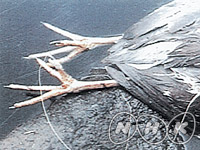
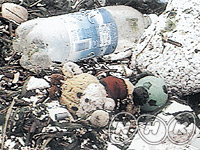
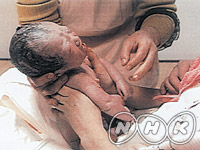
|Length : 20min. x10, 15min. x10 |Year : 1997 |
Placing environment concerns above convenience
In the pursuit for a more comfortable life, humans rarely consider the damage to other living creatures and to the environment. This series questions today's values and lifestyles when measured against the resulting pollutants, waste and blight of natural resources. From an environmental perspective, we are taken on a journey spanning the ocean depths to deep forests and made to re-examine man's impact on nature. Suggestions on how to care for our planet and its finite resources are incorporated into each program, hopefully encouraging us to change our habits and way of life.
1. Creatures that Have Eaten Garbage
2. How Far Can Recycling Go ?
3. The Sleepless City
4. The Ocean's Forests
5. Vegetables for All Seasons
6. The Forest's Secret
7. The Dead Forest
8. A Doctor for Wild Animals
9. A Child is Born!
10. Feeding the Cranes
11. The Water Pouring into the Seas
12. Chase the Litter!
13. Let's Think about Plastic Bottles
14. People and Beech Forest
15. A Story about a Paddy-Field
16. White Stork, Fly Leisurely!
17. Invitation to the 'Dragonfly Kingdom'
18. Making Healthy Soil
19. Hand-made Electric Car, Go!
20. The Food in Japan
Nos.1-10: 20min. each
Nos.11-20: 15min. each
 Junior High School Science | Junior High School Science
Junior High School Science | Junior High School Science
ED039300![]()
ステップ&ジャンプ [NHK]
![]()
![]()
![]()
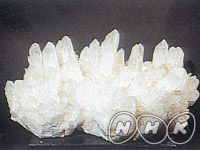
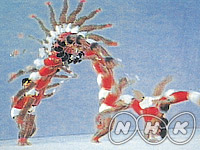
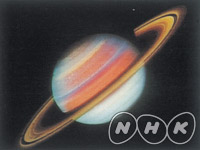
|Length : 15min. x30 |Year : 1993 |
NHK's Science Program Group has accumulated an impressive amount of scientific material over the years in a variety of fields. "Junior High School Science" draws on this extensive library using computer graphics and video footage of actual experiments and research to improve young people's understanding of biology and physical geography - the micro and macro worlds that are background for all human existence. The series covers a range of subjects from a variety of perspectives. It is a fascinating introduction to natural phenomena and the scientific laws and principles that govern them.
[Chemistry]
1. Crystallization
2. Chemical Compounds and Decomposition
3. Burnable Metals
4. Unchanging Mass
5. Properties of lons
6. Electrolysis
7. Separation of Gases
[Physics]
8. Motion and Speed
9. Acceleration
10. Equilibrium of Force
11. Buoyancy
12. The Function of Force
13. Water Pressure
14. Slopes and Friction
15. Falling Motion
16. Work and Energy
17. Wave Transmission
18. Mirrors and Lenses
19. Gas Pressure
20. Magnets
[Biology]
21. Micro-Organisms
22. Reproduction in Plants
23. Digestion and Absorption
24. Blood Circulation
25. Reproduction
26. Biological Evolution
27. The Nervous System
28. Vertebrate Animals
[Physical Geography]
29. The Moon
30. Movement of the Planets
 Let's Tackle Scientific Problems | Let’s Tackle Scientific Problems
Let's Tackle Scientific Problems | Let’s Tackle Scientific Problems
ED029200![]()
はてなにタックル [NHK]
![]()
![]()
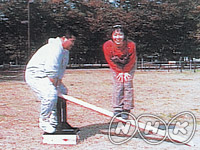
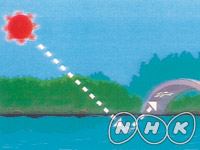
|Length : 15min. X7 |Year : 1992 |
This series of fifteen-minute science programs is a production of NHK. It has been prepared for children of ten years old with the goal of developing their familiarity with and cultivating in them a greater interest in science. Each program features a lively young woman named Mari who sets about tackling scientific problems serving as the children's eyes and ears.
The scientific phenomena addressed are varied and include the lever principle, the properties of light, air and combustion.
In each episode, an off-screen voice representing Mari's young brother Jiro helps Mari in solving problems and carrying out experiments and serves as a device to ask questions or express doubts that the young viewers can not raise.
1. How a Lever Works
2. How Levers Balance
3. Levers in our Dailly Lives
4. Light
5. Reflection of Light
6. Bending Light
7. Fire and Air
 What and Why | What and Why
What and Why | What and Why
ED019100![]()
はてなはてな [NHK]
![]()
![]()
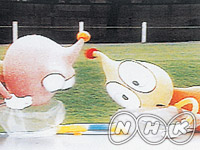
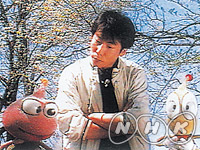
|Length : 15min. x25 |Year : 1991 |
This NHK-produced science series of fifteen-minute programs was made for children aged seven and eight and aims at developing their awareness of and sparking their interest in science. Following the activities of the series' host, a young man named Hiko, and his two puppet friends named Pac and Poli, young viewers are introduced to the wonders of the physical and natural worlds through Hiko's simple experiments, the planting of a vegetable garden and the characters' adventures in fields and woods and at the seashore among other activities. Special video segments, many of which use stop - motion filming, enable the viewers to observe the lives of various creatures and the sprouting of seeds among other interesting aspects of nature. Each of the series' programs has an enjoyable story line to catch young viewers' imagination and attention even as they are exposed to the scientific method and develop a basis for a deeper study of science.
1. Let's Go into a Field
2. Planting Seeds
3. Tadpoles
4. Where Crayfish Live
5. A Closer Look at Crayfish
6. Sunflowers Sprout
7. Let's Look at Birds
8. Playing with Air
9. Experiments with Air
10. Vegetables Grow
11. Grow! Glow! Sunflowers
12. By the Seashore
13. Insects in Summer
14. Picking Sunflower Seeds
15. Soap Bubbles
16. Tumblers
17. Balancing Toys
18. Toys with Weights
19. Insects in the Field
20. How Seeds are Scattered
21. Let's Light Light Bulbs
22. Toys with Light Bulbs
23. What's That Sound ?
24. Making Straw Flutes
25. String Telephones















